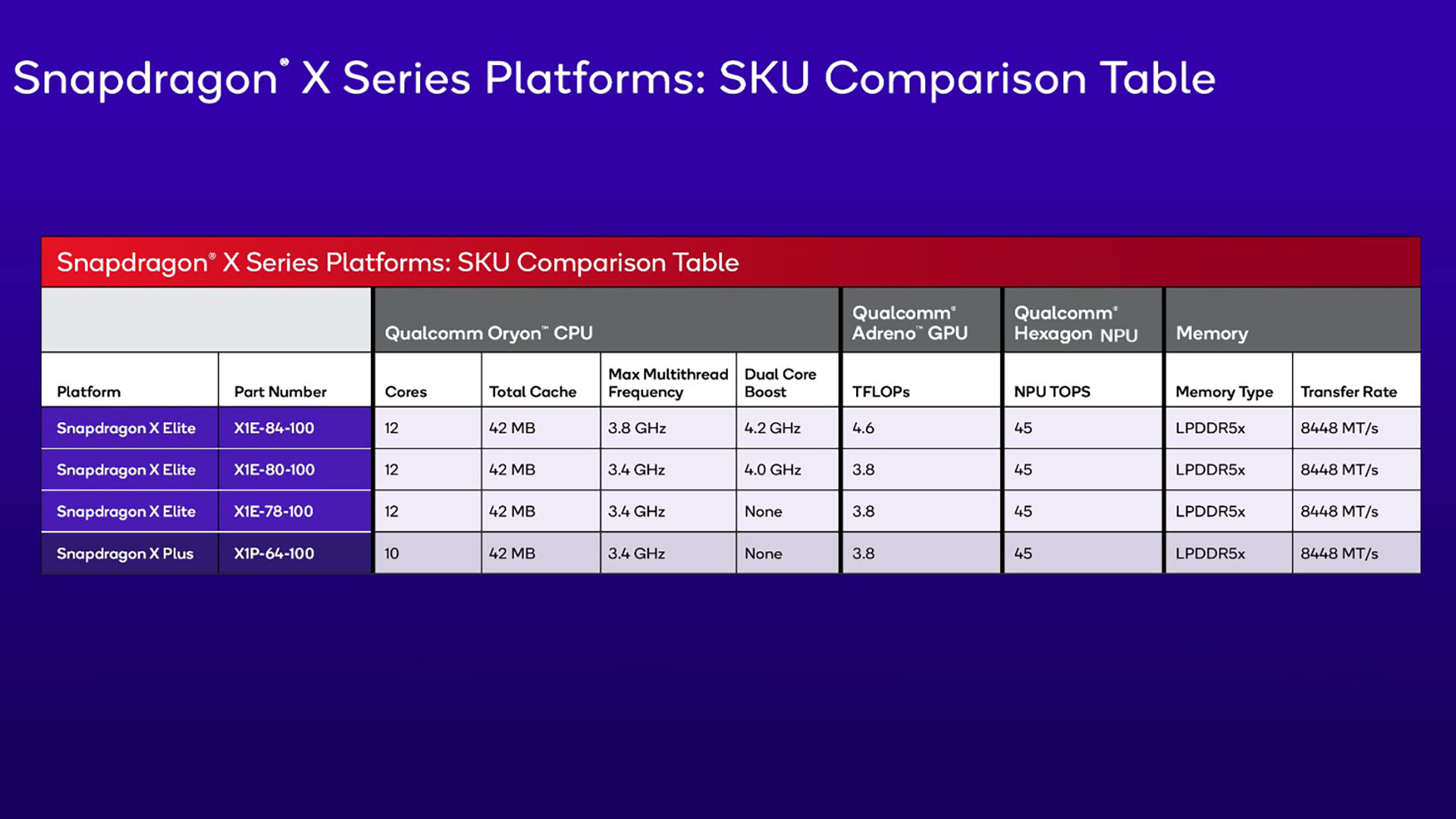Affiliate links on Android Authority may earn us a commission. Learn more.
Snapdragon X Plus is here: It won't be just premium Windows on Arm machines this year
April 24, 2024
- Qualcomm just announced the Snapdragon X Plus processor, an Arm-based processor made for laptops.
- This is a watered-down version of the already announced Snapdragon X Elite.
- Both chips will be used in Windows on Arm laptops, which are slated to launch in the next few weeks.
In October 2023, Qualcomm launched the Snapdragon X series and its first entry: the Snapdragon X Elite. Although we have yet to see a commercial Windows on Arm laptop that includes this chip, Qualcomm is launching another entry in the Snapdragon X family today with the Snapdragon X Plus.
As its name suggests, this new chip is not as good as the Elite model. However, that doesn’t mean it’s a slouch. In fact, the only major difference between the Elite and the Plus is that the former has 12 cores, and the latter has ten. This will make the Elite silicon more performant, but the Plus will still be able to hold its own.
Like the Elite, the Plus has a dedicated Neural Processing Unit (NPU) capable of 45 tera operations per second (TOPS). This will allow it to perform AI-based tasks on-device quickly rather than needing to offload them to the cloud, which adds time and requires a data connection. Given that AI is all the rage these days, Qualcomm is making a big deal out of this. Microsoft is also heavily invested in AI and is looking to make it the forefront of its marketing push for Windows/Surface products. One rumor suggests on-board AI could finally solve the problem of Windows being terrible at finding your files. With onboard AI power, you could potentially search for anything on your computer — files, settings, changes, etc. — and get a response in a matter of seconds.

Elsewhere, like the Elite, the Plus has a built-in Adreno GPU capable of up to 3.8 trillion floating-point calculations every second, or TFLOPS. To give you some idea of this chip’s potential capabilities, another laptop with a similar metric is an M-series MacBook Pro (which offers about 4 TFLOPS). Qualcomm has already shown off playing games like Baldur’s Gate 3 at a solid 30FPS on Snapdragon X Elite prototype laptops (see the video embedded above) without a dGPU. Theoretically, this should also be possible with the X Plus.
As you go further through all the specs, it’s the same story: pretty much everything the Elite has, the Plus also has. It’s just missing those two extra cores, so it won’t be as good as the Elite. However, this also means it won’t be as expensive, which is the real news about this new chipset.
New Windows on Arm laptops that won’t break the bank
The Snapdragon X Elite is expected to launch in premium laptops this year, quite possibly with the expected new Surface Pro laptops we’ll see in May. That will probably be an expensive machine — over $1,000, most likely. This new Plus, though, might be in machines that are a little cheaper. Since the Plus offers most of the capabilities of the Elite, this might be the better option for people looking to get the most performance bang for their buck.
Of course, with either chip, you’ll need to accept using Windows on Arm, which — let’s be honest — doesn’t have the best reputation. Qualcomm can make all the fancy hardware it wants, but if Microsoft doesn’t invest the time and resources into Windows on Arm to make it better compete with macOS, it’s always going to be DOA.
To Microsoft’s credit, it has been throwing its weight behind Qualcomm’s efforts here. Additionally, insiders speaking with The Verge anonymously claim that Windows on Arm has had some significant changes, and Microsoft is fully invested in making it a better competitor towards MacBooks. We’ll likely learn all about this at Microsoft’s upcoming Surface event at the end of May.
While we don’t want to get our hopes up, it is possible that this year, for the first time, Windows users could have access to powerful laptops that can run any program (either natively or through x86 emulation), play most games on low settings smoothly without a dGPU, and still have terrific battery life. We have been burned by Microsoft/Qualcomm before on this, though, so we’re not breaking out the champagne just yet. Once we can get our hands on a real, retail-ready machine, we’ll have a better idea of what’s really going on.